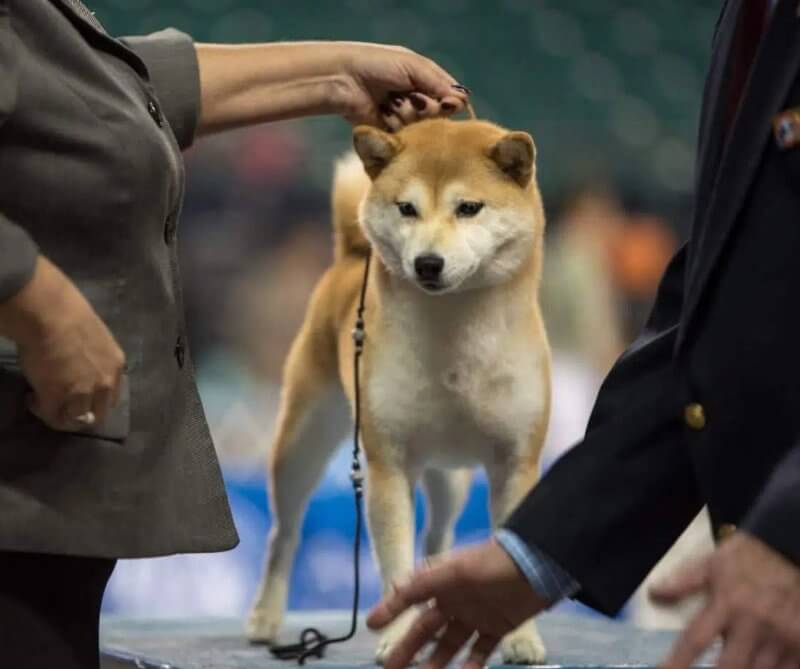The June AKC Delegates Meeting once again brought up discussion of realignment the composition of and/or expanding the seven Variety Groups. Depending on your leanings, you may have experienced the gnashing of teeth or worn a big smile.
Either way, let’s examine the various reasons for and against realignment of the AKC Variety Groups. I’m hoping that this article will help us examine our thinking on the topic, generate additional questions, and possibly, develop alternative paths forward.
Depending on your leanings, you may have experienced the gnashing of teeth or worn a big smile.
Just for the record, my strong belief is that the most important adjudication at a dog show occurs at the Breed level. The most important and meaningful wins are those gotten at your breed’s National Specialty Show. Everything else is icing on the cake. What style cake and icing do you want?
Stick With Seven
For those who do not desire the realignment of AKC Groups or their expansion, the following reasons are often given. Below each reason are additional questions and/or comments for your consideration. Note that these questions or comments, generally, do not address depth of quality throughout a Breed or a Variety Group.
1. Most shows are already so small that the number of Breed representatives in some Variety Groups is a fraction of the number of breeds eligible for that Group.
a. Could the number of Group placements be based on the number of Breed representatives present? Something like the current Awards of Merit at a Specialty Show? The higher the number of representatives, the greater the number of placements there could be until a maximum of 4 (or 6) is reached.
- Example 1: If the Variety Group has representatives from 10 Breeds or less, award two Group placements; if there are 11-20 Breed representatives, award three placements; if there are 20-30 Breed representatives, award four placements; if there are over 30 Breed representatives, award up to six placements.
- Example 2: If there were less than 75 total dogs shown representing all dogs in a Variety Group, then two placements would be awarded; if there were 76-150 total, then three placements; if there were 150-250, then four Group placements; over 250, then up to six Group placements.
2. It would cost more to offer additional rosettes, ribbons, trophies, etc.
a. With a possible expansion from the current seven Groups to 10 Groups, and no changes to the current number of Group placement awards, the cost per additional Group could be $20-80 more per Group. The cost of trophies, if the club sponsors those (and not individual donors), could be an estimated $10-$250 per Group.
b. Would the superintendent charge for additional rings, floor coverings, manpower, etc.? Would the price per entry charged by the superintendent increase as well? How would clubs with small entries (less than 600 dogs per show) pay for this? Would entry fees paid by exhibitors increase?
3. The show hours/day would last longer.
a. Most current show hours are advertised in premium lists as 7:00 a.m. to 7:00 p.m. Each Group takes anywhere from 15-45 minutes to be judged. This is dependent on a number of factors, including the number of specimens present in the Variety Group, whether or not the judge has already judged them in Breed that day, weather conditions, health declarations/emergencies, and/or individual judging procedure. This means that judging of Groups can currently last a range of 1¾-5¼ hours. The addition of up to three more Variety Groups increases that to 2½-7½ hours, if one ring at a time is used for Variety Group judging. The show day would then be, theoretically, extended up to an additional 2¼ hours.
4. Not all parent clubs within a Variety Group want to realign.
a. Some parent clubs want their breeds to stay in their currently assigned Variety Group because of tradition (in the US, that is). The consideration here is for AKC to solicit the parent clubs and for the parent clubs to let AKC know their wishes before realignment of AKC Groups may be shaped.
5. More judges would be needed who could do an entire “realigned” AKC Group.
a. Judges currently judging a particular Variety Group that may be subject to division may not be approved to judge breeds that are added to the newly divided/realigned Group.
- Example: The Multi-Sense Hounds (Basenji, Podencos (Spanish varieties), Podengos (Portuguese varieties), Cirneco dell’Etna, Ibizan Hound, Pharaoh Hound) within the current Hound Group could end up being judged with “primitive” breeds (a la FCI), and unapproved Multi-Sense Hound judges would need education and mentoring in those breeds.
- Example: The same judging education would apply to the Norwegian Elkhound and Norbottenspetts, both Northern/Spitz-type dogs, should there be a realignment.
b. What do clubs do while waiting for all judges to be educated and approved to judge breeds within realigned Groups? How long will the transition last, i.e., by when do all judges for a particular Variety Group have to be educated, mentored, and interviewed before being allowed to pass judgment on the realigned Group?
6. With possibilities of lower numbers of Breed representatives in a Variety Group, Group wins and placements could be so diluted as to be less meaningful.
a. Some dog shows have less than 350 dogs entered, and with absentees, the number actually exhibited may go as low as 250. What does a Group placement mean when there are only six or less average specimens in a Variety Group? Do such small shows draw the best of the best to compete head-to-head in a Variety Group, or do the best of the best head to larger shows where more numerous ranking points are available?
b. What does it mean to go second, third, or fourth out of four or six in a Variety Group when there is little to no depth of quality through the various Breed representatives?
- Consider this analogy of substance vs. vacuous volume in the cakes described below. If the quantity exhibited and the depth of quality can be likened to a cake, and Group placements to the icing on top of the cake, which would you rather have: a cake with multiple 1″ layers and an icing cover of 3/8″ or a cake with one 1″ layer and 6″ of icing?
Some dog shows have less than 350 dogs entered, and with absentees, the number actually exhibited may go as low as 250. What does a Group placement mean when there are only six or less average specimens in a Variety Group?
A Perfect 10
For those who do want to see the realignment of AKC Groups or their expansion, the following reasons are often given. Below each reason are additional questions and/or comments for your consideration. Again, please note that these questions or comments, generally, do not address depth of quality throughout a Breed or a Variety Group.
1. Alike or similar breeds should be judged together in a Variety Group.
a. How would the current seven AKC Variety Groups be divided? Would they follow the FCI divisions? Would there be divisions according to function, or common origin progenitor breeds, or geographical origin, or common morphological characteristics?
b. How might these divisions look upon a restructuring?
- Would Sporting be split into Retrievers and Spaniels, Pointers and Setters? In which division would the multi-purpose Sporting dogs such as the Small Munsterlander fall? Would the Poodle go back to its roots as a sporting dog and be part of a Sporting Group?
- Would the Hound Group be split into Scenthounds and Sighthounds, or even Multi-Sense Hounds? Which breeds would make up the Multi-Sense Hound Group? Where would the Norwegian Elkhound, Basenji, Rhodesian Ridgeback, Norbottenspetts, and PPSP (Peruvian Inca Orchid) go? Where do the Dachshunds go? They are used as scenthounds and as earth/hole dogs.
- Would the Working Group be conceivably divided into three separate Groups: Northern and Spitz-type, Molossers, all others? Would the Norwegian Elkhound, Norbottenspetts, Akita, Alaskan Malamute, Chinook, Samoyed, Siberian Husky, Pomeranian, American Eskimo, Chow Chow, Finnish Spitz, Keeshond, Norwegian Lundehund, Schipperke, Shiba Inu, Norwegian Buhund, Icelandic Sheepdog, and Kai Ken all be in the Northern/Spitz Group? Is a Working Group the place for the Dalmatian?
- Would Terriers be divided into short-legged and long-legged? Or above-ground workers vs. below-ground workers? Would the Toy Manchester Terrier and the Yorkshire Terrier be part of a Terrier Group?
- Would there be a separate Group for bull-breeds? Which breeds would comprise this Bull-Breed Group: Bull Terrier, Miniature Bull Terrier, American Staffordshire Terrier, Staffordshire Bull Terrier, Bulldog, French Bulldog, Boston Terrier, and Pug?
- Should the Toy Group be divided? If so, how?
- What about the Non-Sporting Group? This current catch-all Group has breeds that could be parceled out into current or future divided Groups? Would those divisions be based on historical work Geographical origin?
- How would a Herding Group be split? Cattle dogs vs. sheep dogs? Or herders vs. guardians?
c. To which Groups would FSS Breeds be assigned? Should there even be an FSS or Miscellaneous Group?
2. With more Groups, there will be an opportunity for more dogs to gain Group points and be competitive in the rankings.
a. See 4a and 4b below.
3. Variety Groups with large numbers of Breed representatives take a long time to judge.
a. What about the Variety Groups with a small number of Breed representatives? Doesn’t it all balance out?
b. Does a larger number of Breed representatives indicate a greater depth of quality?
c. Does it make judges work harder to ascertain the nuanced differences between breeds according to their breed standards?
4. Judges will have an easier time judging similar breeds.
a. How is this different from the current Group divisions?
b. If they can judge multiple Groups, wouldn’t they have to know the differences that make up any similar grouping of breeds?
With more Groups, there will be an opportunity for more dogs to gain Group points and be competitive in the rankings.
The pros and cons for AKC Group realignment are many. Careful and deliberate thought is needed with multiple input from parent clubs, exhibitors and handlers, and clubs that put on small, medium, and large-entry shows. There is no easy answer.









